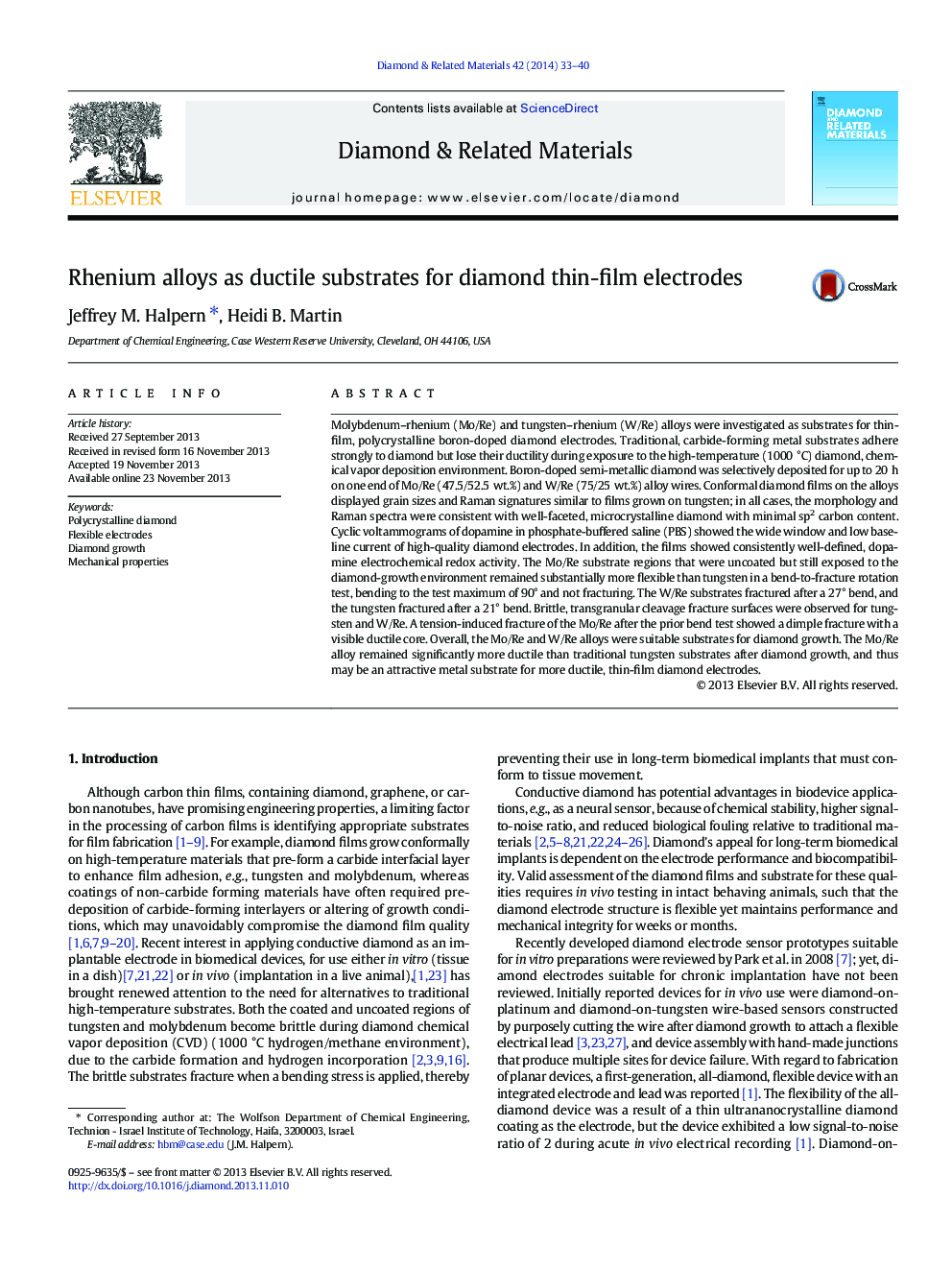| کد مقاله | کد نشریه | سال انتشار | مقاله انگلیسی | نسخه تمام متن |
|---|---|---|---|---|
| 702106 | 1460789 | 2014 | 8 صفحه PDF | دانلود رایگان |
• Rhenium alloys were investigated as substrates for diamond film growth.
• Mechanical bend testing and imaging compared alloy ductility and microstructure.
• Molybdenum–rhenium alloys stayed more flexible than tungsten and tungsten–rhenium.
• Embrittlement was limited to the outer shell of the molybdenum–rhenium wires.
• Alloys were viable high-temperature substrates for flexible diamond electrodes.
Molybdenum–rhenium (Mo/Re) and tungsten–rhenium (W/Re) alloys were investigated as substrates for thin-film, polycrystalline boron-doped diamond electrodes. Traditional, carbide-forming metal substrates adhere strongly to diamond but lose their ductility during exposure to the high-temperature (1000 °C) diamond, chemical vapor deposition environment. Boron-doped semi-metallic diamond was selectively deposited for up to 20 h on one end of Mo/Re (47.5/52.5 wt.%) and W/Re (75/25 wt.%) alloy wires. Conformal diamond films on the alloys displayed grain sizes and Raman signatures similar to films grown on tungsten; in all cases, the morphology and Raman spectra were consistent with well-faceted, microcrystalline diamond with minimal sp2 carbon content. Cyclic voltammograms of dopamine in phosphate-buffered saline (PBS) showed the wide window and low baseline current of high-quality diamond electrodes. In addition, the films showed consistently well-defined, dopamine electrochemical redox activity. The Mo/Re substrate regions that were uncoated but still exposed to the diamond-growth environment remained substantially more flexible than tungsten in a bend-to-fracture rotation test, bending to the test maximum of 90° and not fracturing. The W/Re substrates fractured after a 27° bend, and the tungsten fractured after a 21° bend. Brittle, transgranular cleavage fracture surfaces were observed for tungsten and W/Re. A tension-induced fracture of the Mo/Re after the prior bend test showed a dimple fracture with a visible ductile core. Overall, the Mo/Re and W/Re alloys were suitable substrates for diamond growth. The Mo/Re alloy remained significantly more ductile than traditional tungsten substrates after diamond growth, and thus may be an attractive metal substrate for more ductile, thin-film diamond electrodes.
Journal: Diamond and Related Materials - Volume 42, February 2014, Pages 33–40
